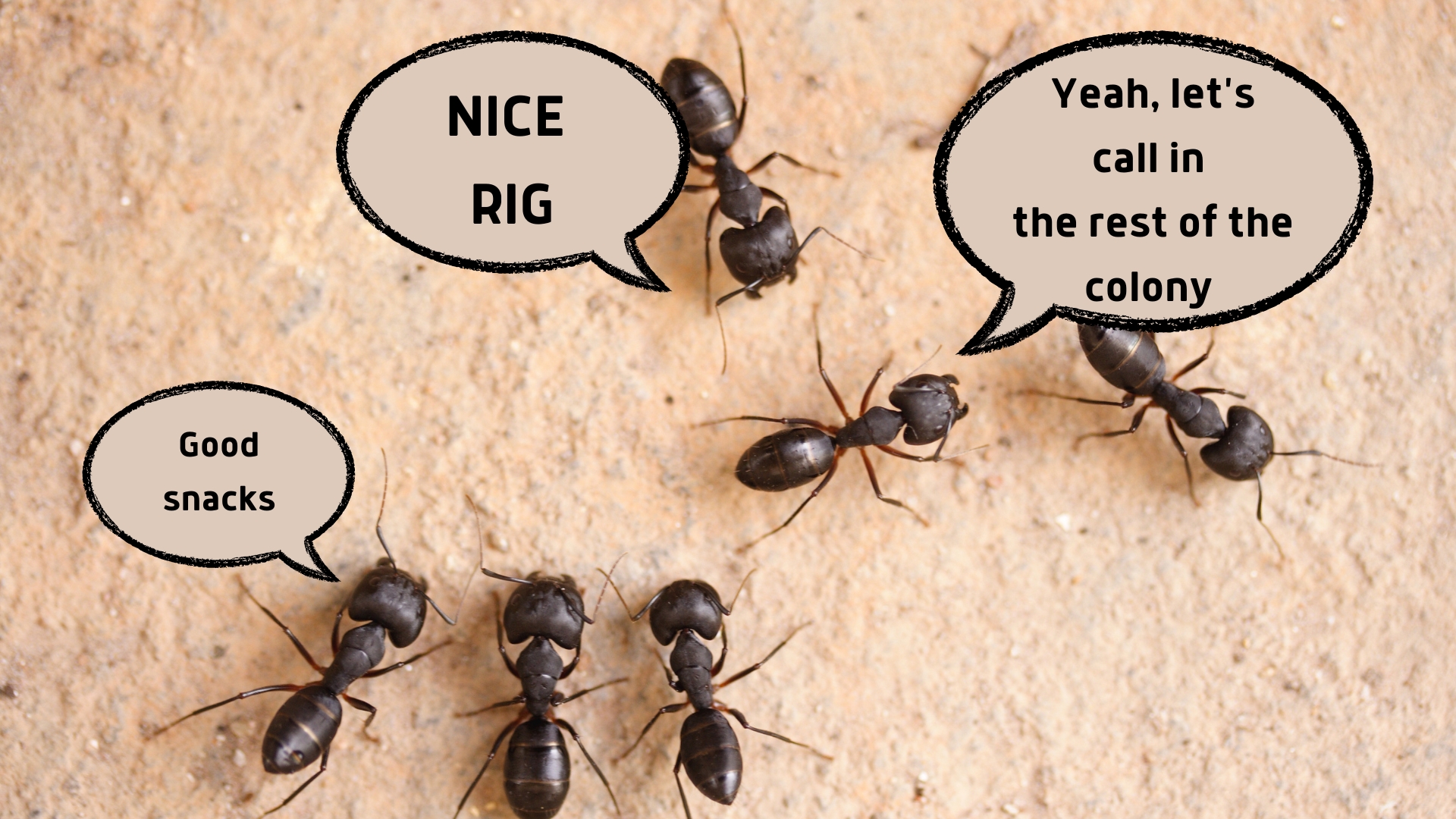Identifying Ant Entry Points: How To Keep Ants Out Of Kitchen Cabinets

Ants are persistent and can find their way into your kitchen cabinets through even the tiniest of openings. Understanding where they’re getting in is the first step in keeping them out.
Common Entry Points
Knowing where ants typically enter your kitchen cabinets will help you seal those entry points.
- Cracks and crevices: These can be found around baseboards, countertops, and cabinet doors. Ants are skilled at squeezing through even the smallest gaps.
- Gaps under cabinets: If your cabinets are not properly sealed to the floor, ants can easily find their way in.
- Openings around pipes and wires: Ants often use the spaces around pipes and electrical wires as entry points.
- Damaged seals: If the weather stripping around your doors or windows is damaged, it can provide ants with a convenient entry point.
Characteristics of Ant Entry Points
- Small and inconspicuous: Ant entry points are often very small, making them difficult to spot.
- Often located in hidden areas: Ants tend to enter through areas that are not easily visible, such as behind appliances or under cabinets.
- Can be multiple entry points: Ants may use several different entry points to access your kitchen cabinets.
Sealing Ant Entry Points, How to keep ants out of kitchen cabinets
- Caulk: Caulk is an effective way to seal cracks and crevices around baseboards, countertops, and cabinet doors.
- Weather stripping: Replace damaged weather stripping around doors and windows to prevent ants from entering.
- Steel wool: Stuff steel wool into openings around pipes and wires to deter ants.
- Silicone sealant: Use silicone sealant to seal gaps under cabinets and around appliances.
Cleaning and Prevention

Regular cleaning is crucial for preventing ant infestations in your kitchen cabinets. Ants are attracted to food crumbs, spills, and even sticky residues left behind from cooking. By maintaining a clean and ant-free environment, you can significantly reduce the chances of an infestation.
Cleaning Kitchen Cabinets to Remove Ant Attractants
Thorough cleaning of your kitchen cabinets is essential to eliminate ant attractants and discourage them from returning. Here’s a step-by-step guide to effectively clean your cabinets:
- Empty the cabinets: Remove all food items, utensils, and other contents from your cabinets. This will allow you to access every nook and cranny for a thorough cleaning.
- Remove loose crumbs and debris: Use a vacuum cleaner with a crevice tool to remove any loose crumbs, food particles, or dust from the shelves, corners, and back of the cabinets. This is especially important in areas where food spills may have occurred.
- Wipe down shelves and surfaces: Use a damp cloth with mild dish soap to wipe down all surfaces of the cabinets, including shelves, sides, and doors. Pay special attention to areas where food spills or sticky residues may have accumulated.
- Clean the cabinet interiors: If your cabinets have drawers, remove them and clean them thoroughly with a damp cloth and mild dish soap. Ensure you clean the tracks and any crevices where crumbs or debris may have accumulated.
- Dry everything completely: Allow all surfaces to air dry completely before placing items back into the cabinets. Moisture can attract ants, so ensuring everything is dry is essential.
Preventing Ants from Entering Cabinets
Once you’ve cleaned your cabinets, it’s important to take preventative measures to keep ants out. Here are some tips:
- Seal entry points: After identifying ant entry points, use caulk or sealant to seal any cracks, gaps, or holes in your cabinets, walls, and baseboards. This will prevent ants from finding their way inside.
- Store food in airtight containers: Store all food items, including dry goods, snacks, and spices, in airtight containers to prevent ants from accessing them. This will eliminate their primary food source and make your cabinets less attractive.
- Clean spills immediately: Promptly clean any spills or crumbs that may occur on countertops or cabinet surfaces. This will prevent ants from being attracted to the area and finding their way into your cabinets.
- Use natural ant repellents: Natural ant repellents, such as peppermint oil, cinnamon, or citrus peels, can be placed near entry points or inside cabinets to deter ants. These scents are generally disliked by ants and can help to keep them away.
- Keep countertops clean: Maintaining clean countertops is essential, as ants can easily climb from the countertop to your cabinets. Regularly wipe down your countertops with a damp cloth and dish soap to remove any crumbs or spills.
Natural and Chemical Solutions

Once you’ve identified ant entry points and cleaned your kitchen thoroughly, you’re ready to deploy a strategic defense against these persistent pests. There are both natural and chemical solutions you can use to deter and eliminate ants. Let’s explore the pros and cons of each approach.
Natural Ant Repellents
Natural ant repellents are a great option for those who prefer to avoid harsh chemicals. Some popular choices include peppermint oil and vinegar.
- Peppermint oil is a strong ant repellent. Its pungent aroma is unpleasant to ants and can deter them from entering your home. You can create a DIY spray by mixing a few drops of peppermint oil with water and spraying it around entry points and areas where ants have been sighted. However, be mindful that peppermint oil can be toxic to pets, so keep it out of reach. Additionally, its effectiveness may be limited in areas with heavy ant infestations.
- Vinegar is another effective natural ant repellent. Ants dislike the acidic nature of vinegar, and it can disrupt their scent trails. You can spray vinegar directly on ant trails, or mix it with water and spray it around entry points. Vinegar is generally safe for pets, but it can damage some surfaces, so test it on an inconspicuous area first.
Ant Baits and Traps
Ant baits and traps offer a targeted approach to ant control. They work by attracting ants with a food source that contains an insecticide.
- Liquid baits are typically placed in small containers and are effective against a variety of ant species. They work by attracting ants with a sugary or protein-based solution that contains an insecticide. Once the ants consume the bait, they carry it back to the colony, where it kills the queen and other ants. Liquid baits are effective for both indoor and outdoor use. They are also easy to use and relatively inexpensive. However, liquid baits can be messy and may attract other pests, such as flies and cockroaches.
- Gel baits are similar to liquid baits, but they have a thicker consistency that prevents them from spilling. Gel baits are also less attractive to other pests, making them a good choice for kitchens.
- Stationary traps are typically placed near ant entry points and contain a sticky substance that traps ants. Stationary traps are effective for catching individual ants, but they may not be as effective as baits in eliminating entire colonies.
Ant-Killing Sprays
Ant-killing sprays are a quick and effective way to kill ants on contact. They typically contain pyrethroids, which are synthetic insecticides that are effective against a variety of insects.
- When using ant-killing sprays, it is important to follow the instructions on the label carefully. Spray the solution directly on ants and ant trails, but avoid spraying it on food surfaces or near children and pets. Always wear gloves and a mask when using ant-killing sprays to protect yourself from inhaling the chemicals.
How to keep ants out of kitchen cabinets – Keeping ants out of kitchen cabinets can be a constant battle, but a clean and organized space can deter them. One way to ensure a clutter-free environment is to upgrade your cabinet hinges to kitchen cabinet gas hinges which allow for smooth and effortless opening and closing.
This eliminates the need to forcefully slam cabinets shut, which can dislodge crumbs and attract ants. By keeping your cabinets clean and accessible, you can create a less appealing environment for ants and maintain a pest-free kitchen.
Keeping ants out of kitchen cabinets is essential for maintaining a clean and hygienic environment. A thorough cleaning, including wiping down surfaces and sealing any cracks or crevices, can help deter these pesky insects. If you are considering replacing your cabinets, consider exploring options like used kitchen cabinets in Utah , which can offer an affordable and stylish alternative.
Once you have new cabinets, remember to continue practicing good hygiene habits to prevent future ant infestations.
